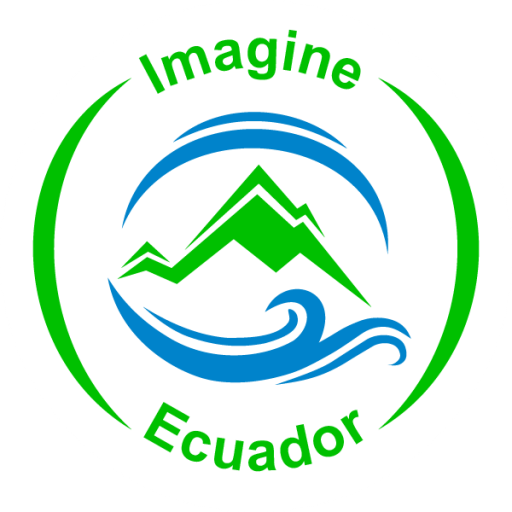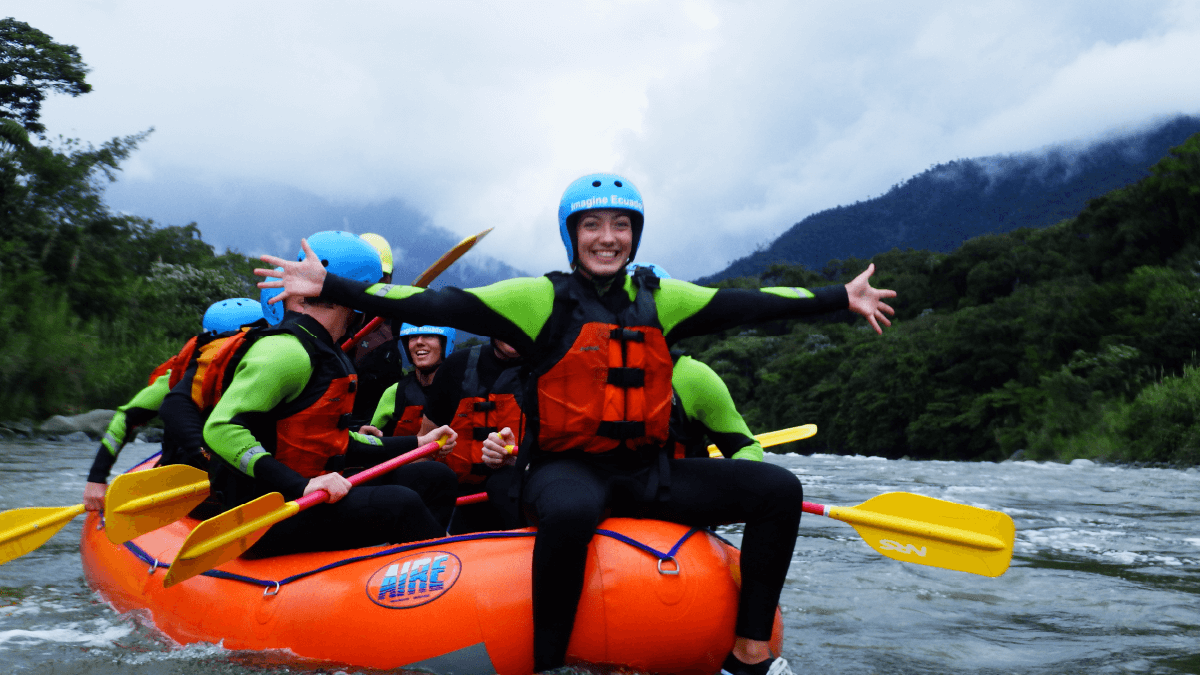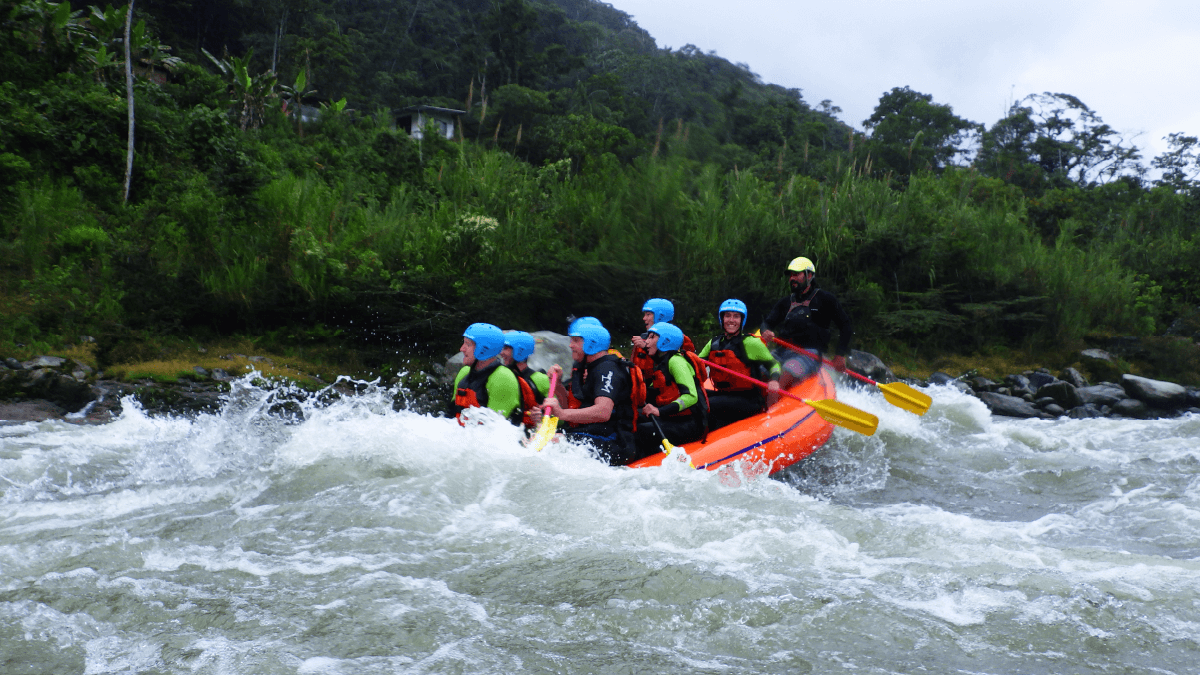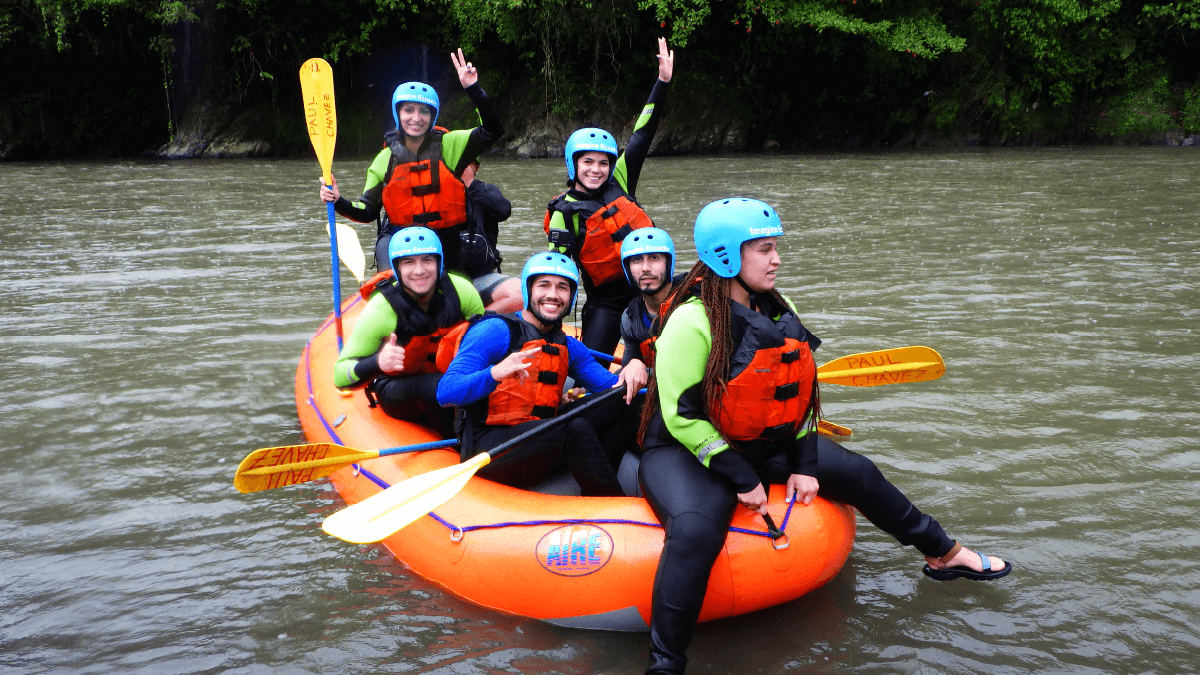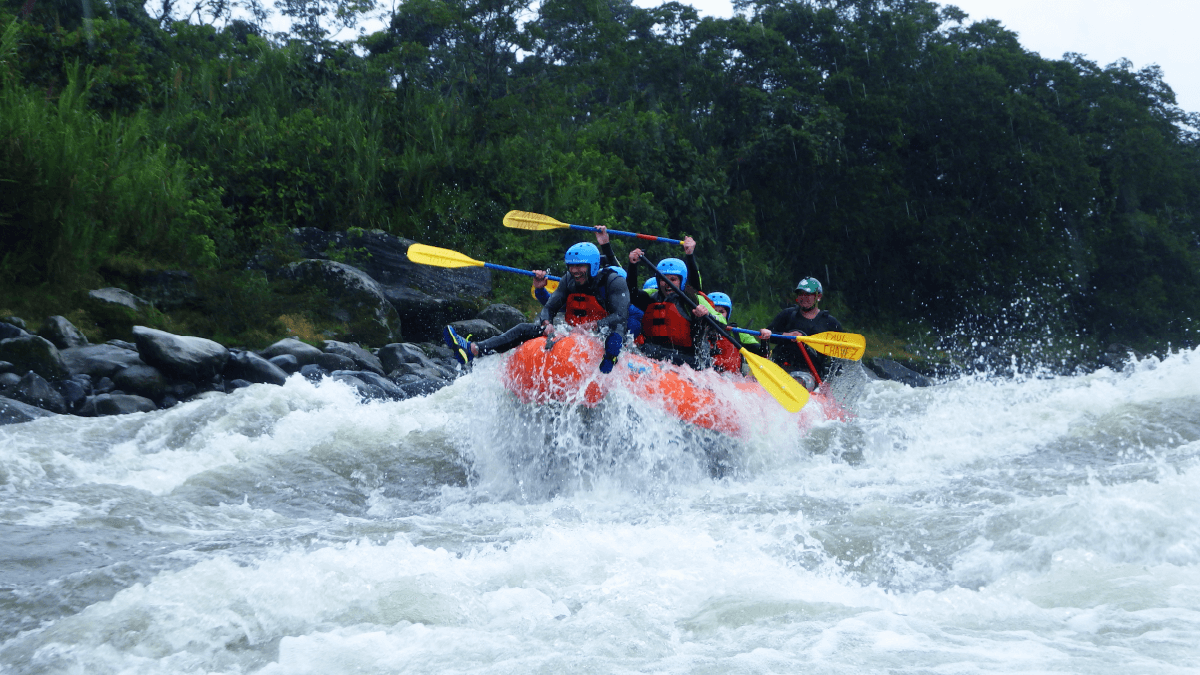If you are looking for an outstanding rafting experience with first class service and talented guides only Imagine Ecuador can offer this in Baños Ecuador!
WHITEWATER RAFTING CONCEPT
Whitewater is formed in a rapid, when a river’s gradient increases enough to disturb its laminar flow and create turbulence, i.e., form a bubbly, or aerated and unstable current; the frothy water appears white.
The term “whitewater” also has a broader meaning, applying to any river or creek itself that has a significant number of rapids.
RAPIDS
There are 4 factors, separately or in combination, can create rapids: gradient, constriction, obstruction and flow rate.
1. Stream Bed topography. Stream bed topography is the primary factor in creating rapids and is generally consistent over time.
2. Gradient. The gradient of a river is the rate at which it loses elevation along its course.
3. Constriction. Constrictions can form a rapid when a river’s flow is forced into a narrower channel.
4. Obstruction. A boulder or ledge in the middle of a river or near the side can obstruct the flow of the river, and can also create a “cushion”; a “drop” (over the boulder); and “hydraulics” or “holes” where the river flows back on itself–perhaps back under the drop–often with fearful results for those caught in its grasp.
International Scale of River Difficulty
The most widely used grading system is classed in six categories from level I (the easiest and safest) to level VI (the most difficult and most dangerous). The grade reflects both the technical difficulty and the danger associated with a rapid, with grade.
Level I (no experience necessary): Very small rough areas, requires no maneuvering, for example a river pool
Level II (basic paddling skills): Some rough water, maybe some rocks, small drops, might require maneuvering.
Level III (basic experienced paddling skills): Whitewater, medium waves, maybe a 3-5 ft drop, not that easy or imposible but a lot fun. May require significant maneuvering.
Level IV (experienced whitewater skills): White Water, large waves, long rapids, rocks, maybe a considerable drop, sharp maneuvers may be needed.
Level V (advanced whitewater rafters): White Water, large waves, continuous rapids, large rocks and hazards, maybe a large drop, precise maneuvering
Level VI (for experts): Whitewater, typically with huge waves, huge rocks and hazards, huge drops, but sometimes labeled this way due to largely invisible dangers, for example a smooth slide that creates a near-perfect, almost inescapable hydraulic.
